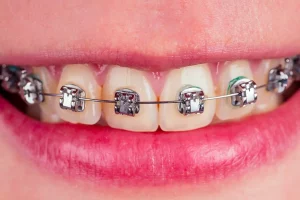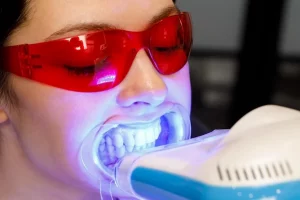Maintaining the teeth color as white by removing the stains is the success of good oral hygiene, but have you heard of discoloration of natural tooth color leading to a white spot on the teeth that looks clear to your naked eye? If you notice white spots on your teeth, consult a nearby dentist for treatment. The treatment of white spot lesions on the teeth depends on the cause of it. Continue reading to learn more about the causes and treatment options for white spots on the teeth.
There is no need to worry about the white spots on teeth as they are a common decalcification that most people experience at some point. It is reversible, so there is no need to worry. At the same time, unaddressing these issues can lead to further enamel breakdown or cavities.
Are White Spots on Teeth Permanent?
White spots are not always permanent. In many cases where it is detected early and reported, it is reversed and significantly reduced with proper dental care and professional treatments. However, the permanency of white spots on teeth depends on the cause. For example,
- Enamel hypoplasia (a developmental condition) may leave permanent marks.
- Demineralization due to poor oral hygiene is often reversible.
- Fluorosis-related white spots may be mild and treatable with cosmetic procedures.
What Causes White Spots on Teeth?
There are several reasons why you might develop white spots on your teeth. They are,
1. Poor Oral Hygiene
It is common during orthodontic treatment, especially if plaque builds up around braces. Bacteria feed on sugars to produce acids, which strip minerals from enamel and leave behind white lesions.
2. Excessive Fluoride (Fluorosis)
Fluorosis occurs due to high fluoride exposure during early childhood. It alters the enamel development process, leading to white spots on teeth.
3. Enamel Hypoplasia
This is a developmental defect where the enamel is thinner or improperly formed. It may result from nutritional deficiencies, high infant fevers, or prenatal conditions.
4. Demineralization
Acidic foods, sugary drinks, or chronic dry mouth can all cause enamel to lose its minerals over time, resulting in localized discoloration.
5. Teeth Whitening Sensitivity
In some people, the contrast caused by bleaching highlights pre-existing white spots that are more visible.
How to Get Rid of White Spots on Teeth
Treating white spots depends on their severity and root cause. Your dentist may recommend one or a combination of the following,
1. Remineralization Therapy
This includes fluoride varnishes, remineralizing toothpaste (with calcium phosphate), or prescription gels. These help rebuild lost minerals and strengthen the enamel.
2. Microabrasion
A gentle polishing technique where a combination of fine abrasives and acid removes a thin layer of enamel to reduce or eliminate white spots.
3. Resin Infiltration (ICON)
This minimally invasive procedure uses a special resin to infiltrate the porous white spot by blending it with the surrounding enamel to improve aesthetics.
4. Composite Bonding or Veneers
In very severe cases where cosmetic results are essential, dental bonds or veneers may be used to mask the white spots completely.
How to Remove White Spots on Teeth Naturally
You can use the home remedies below, which work best for early-stage white spots or mild cases.
- Oil pulling with coconut oil may reduce bacterial load and support oral health.
- Baking soda paste can help rebalance oral pH and prevent further demineralization.
- A diet rich in calcium and phosphorus (e.g., dairy, almonds, leafy greens) supports natural enamel repair.
- Avoiding acidic foods and beverages can help preserve mineral content in your enamel.
However, always consult your dentist before relying on home remedies.
Takeaway
White spots on teeth are treatable and can be reversed, but noticing them and being careless could cause serious complications. So, to achieve a healthy and flawless smile, contact the nearby dental clinic. White spots are not just a cosmetic nuisance but signs that your enamel needs attention.
If you or your child notice these lesions, waiting is unnecessary. Contact Oris Dental Center to get rid of white spots on your teeth.





